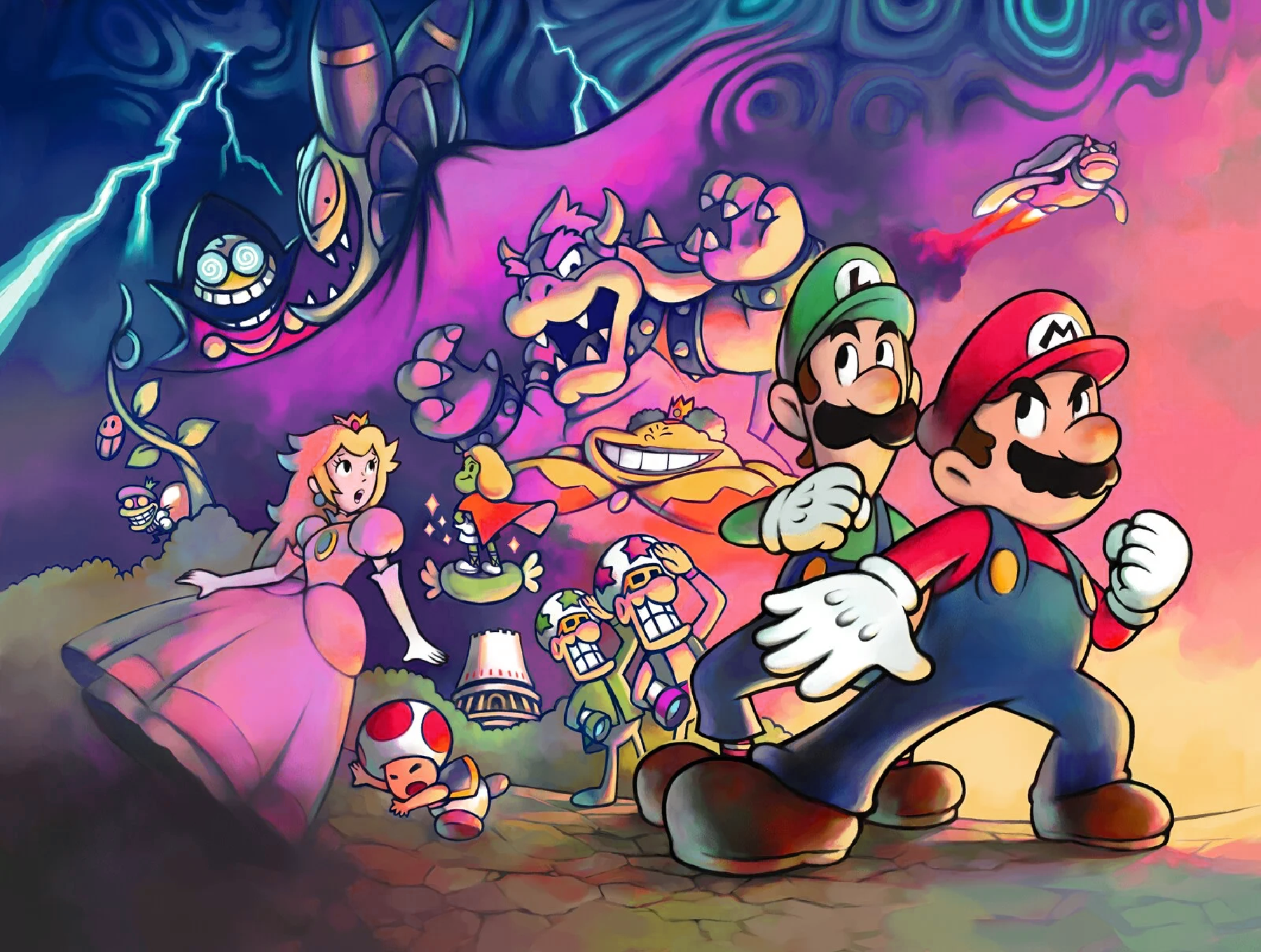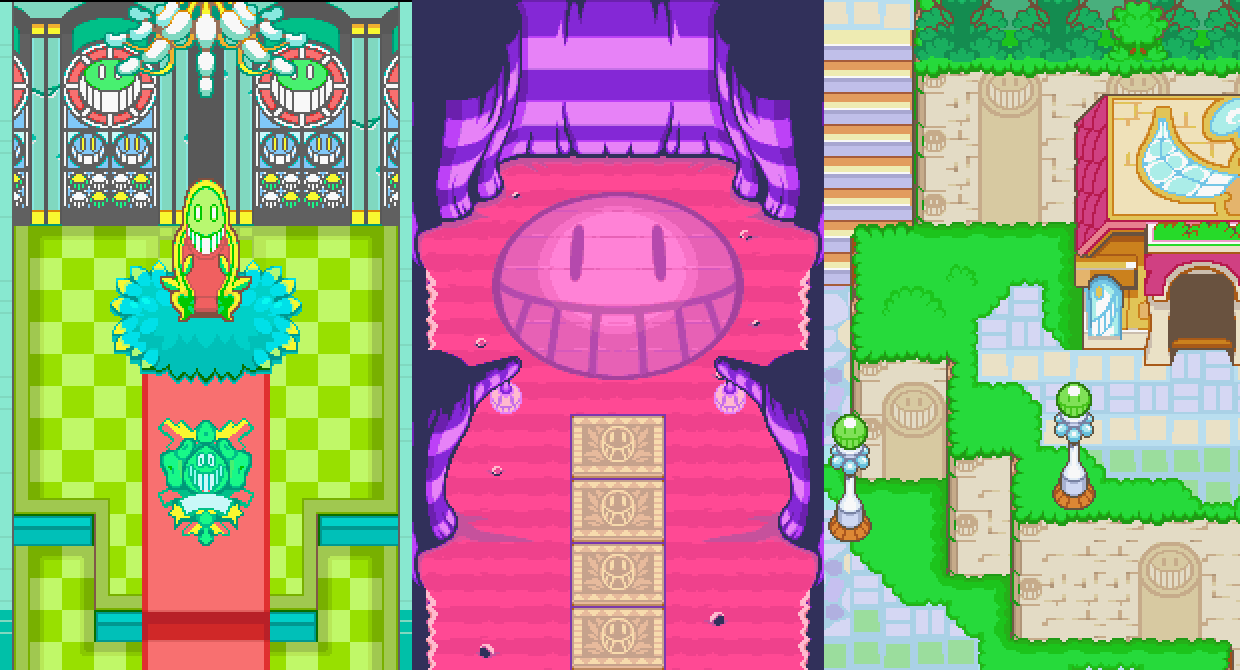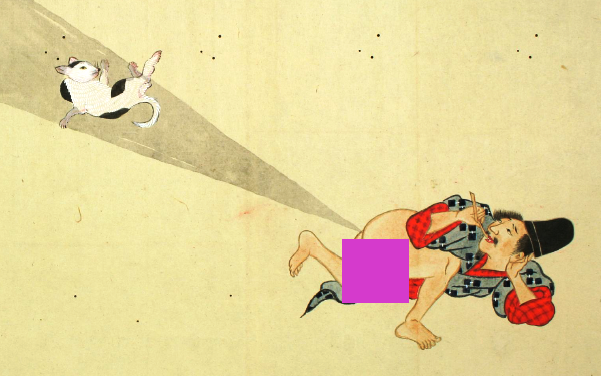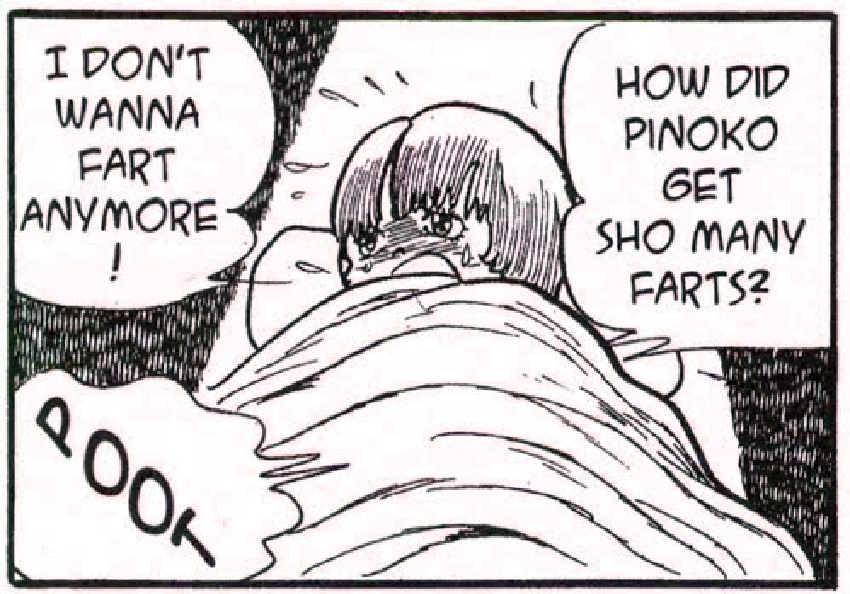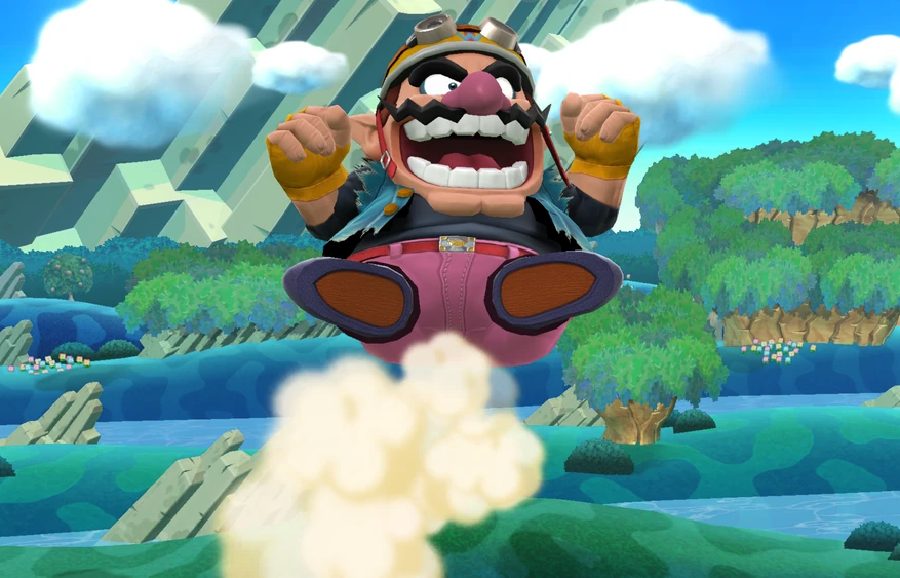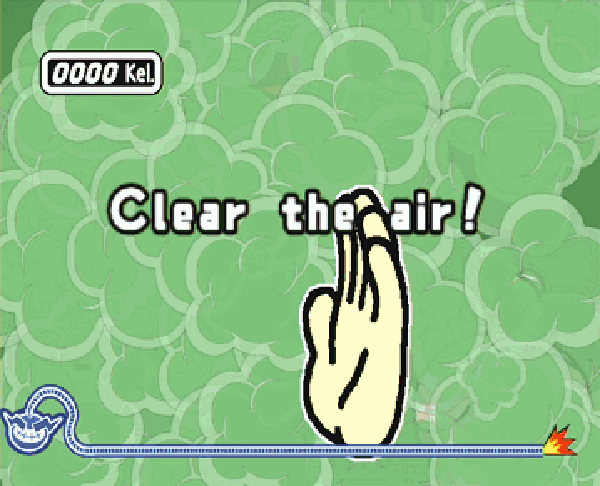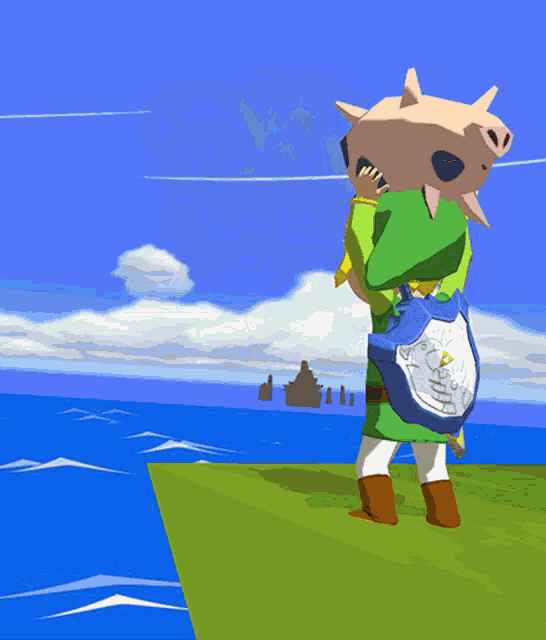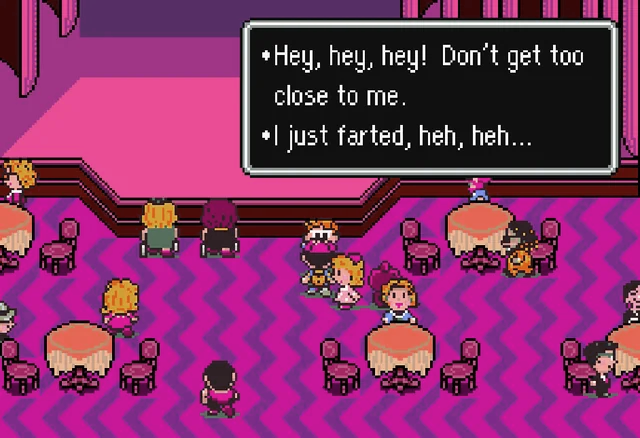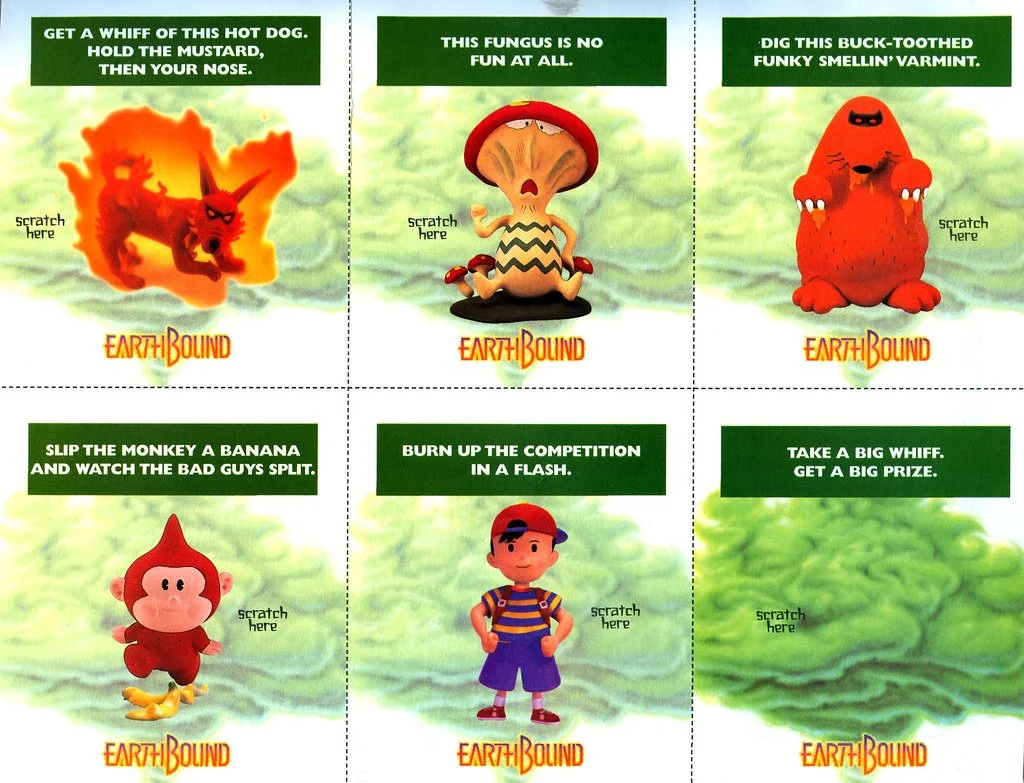Is Mario & Luigi: Superstar Saga One Big Fart Joke?
In the previous post, I sifted through more than a hundred pages of court docs from a milestone video game lawsuit in what amounts to the most journalism I’ve done for this website. How do I follow that up? That’s easy: farts!
I realize that may not sound like everyone’s cup of tea — in fact, it’s a cup of farts — but trust me that there is educational value here, because I ended up writing about global perspectives on this very normal function of the human body. Right at the top of this post, I should say that I don’t come to an answer about a certain long-simmering question I had about Mario & Luigi: Superstar Saga. But this is one of those cases where it’s about the journey more than the destination, even if the journey happens to be about whether this one Mario game is built on a foundation of fart humor.
Not actually Princess Peach being attacked with a fart machine, but you’d be forgiven for thinking that.
In case you don’t know, Superstar Saga is Nintendo’s second effort to follow up the success of Super Mario RPG not with an actual sequel but with a spiritual descendant that ended up spawning its own franchise. The Mario & Luigi games are arguably less popular than the Paper Mario ones, but it’s a worthwhile series with its own interpretation of the battle mechanics and peculiar humor of Super Mario RPG. In this first entry, Mario and Luigi both leave the Mushroom Kingdom for Beanbean Kingdom, where everything is bean-themed — bean decor everywhere the way the Mushroom Kingdom has mushroom designs, bean people toddling around the way the Mushroom Kingdom has Toads, and overall just beans seeped into every facet of life in this place. It’s literally the Mushroom Kingdom with mushrooms subbed out for beans.
Many characters and places are named after beans, but oddly not all of them. Quite a few are named after words for laughter, in both the original Japanese and the English localization.
Here are all the bean-themed names:
Beanbean Kingdom itself, obviously (Japanese name: マメーリア王国 or Mamēria Ōkoku, from 豆 or mame, meaning “bean, legume”)
Queen Bean, the reigning monarch and a zaftig equivalent of Princess Peach (Japanese name: マメラ女王 or Mamera Joō, presumably mame with a feminine ending)
Lady Lima, the queen’s advisor and the Beanbean equivalent of Toadsworth (Japanese name: マメばあ or Mamebā, with 婆 (bā) meaning “old woman”)
Prince Peasley, the queen’s son and I guess the would-be hero of this new place? (Japanese name: マメック王子 or Mamekku-ōji)
Fawful, the main villain’s sidekick and one of the only characters from this game to show up in a sequel (Japanese name: ゲラコビッツ or Gerakobittsu, this one being a weird blend of the laughter onomatopoeia ゲラゲラ or geragera and apparently the Germanic surname suffix -witz, at least according to the Super Mario Wiki)
Fava, a Beanish architect (Japanese name: マメディor Mamedi)
The Peas, smaller Beanish people inhabiting the land (Japanese name: マメピヨ or Mamepiyo, which Super Mario Wiki conjectures is a play on ひよこ豆 or hiyoko-mame, “chickpea”)
The Soybean civilization, a people that inhabited Beanbean Kingdom in prehistoric times (Japanese name: エダマメア文明 or Edamamea Bunmei)
And here are all the laughter-themed names:
Cackletta, an evil bean witch and the big bad of the game (Japanese name: ゲラゲモーナ or Geragemōna, with ゲラゲラ or geragera being onomatopoeia for laugher)
Fawful, again actually because that Germanic surname suffix -witz also on its own happens to be the German word for “joke”
Harhall, a Beanish fashion designer whose name is a portmanteau of ha and Warhol (Japanese name: キャハール or Kyahāru, from キャハハ or kyahaha but also alleged by Super Mario Wiki to be combined with Karl Lagerfeld’s name??)
Dragohoho (Japanese name: オホホラゴン or Ohohoragon, from the laughter onomatopoeia オホホ or ohoho plus ラゴン or doragon, “dragon”)
Jojora, a kind of unexplained female ice spirit fought in one of the final dungeons — and uniquely the only character with the same name in both English and Japanese, where it’s ジョジョラ or Jojora
Chucklissa, Oholina, Hoohoolia and Teeheena, Jojora’s hulking female friends, all palette swaps who fight alongside Jojora and behave identically; each is named for a different region of Beanbean Kingdom and their names reflect this in Japanese as well: ゲラーネ or Gerāne, ウフーネ or Ufūne, アハーネ or Ahāne, and finally デヘーネ or Dehēne
Hoohoo Village (Japanese name: ウフ村 or Ufu-Mura, ウフッ or ufu meaning “chuckle”)
Chuckola Cola, a soda created by telling jokes to Chuckola Fruit and clearly a blend of Coca-Cola and chuckle (Japanese name: ゲラゲラソーダ or Geragera Sōda, from the same root as Cackletta’s Japanese name, to the point that I wonder if she’s actually supposed to be an anthropomorphic version of the Chuckola berries??)
Chateau de Chucklehuck, the “brewery” where Chuckola Cola is made (Japanese name: シャトー・ゲラゴーニュ or Shatō Geragōnyu, which the Super Mario Wiki theorizes is a combo of ゲラゲラ or geragera and the French name for Burgundy, Bourgogne, rendered in katakana as ブルゴーニュ or Burugoonyu)
Teehee Valley (Japanese name: デヘヘバレー or Dehehe Barē, from デヘヘ or dehehe, another Japanese laughter onomatopoeia)
Guffawha Ruins (Japanese name: クショーいせき or Bakushō Iseki, from the Japanese 爆笑 or bakushō, meaning “uproarious laughter”)
Oho Oasis (Japanese name: クスアイランド or Kusu Airando, from くすくす or kusukusu, meaning “giggingly”)
Gwarhar Lagoon (Japanese name: ヘラヘラグーン or Heraheragūn, from ヘラヘラ or herahera, meaning “laughing foolishly”)
And finally Joke’s End, a rather grim, icy dungeon that is one of the last areas in the game and which is purported to be the graveyard for bad jokes (Japanese name: ジョークエンド or Jōku Endo)
There are other names that are neither bean- nor laughter-themed. But for the ones that are, the English localization preserves which is which, with the notable exception of Cackletta, whose English name doesn’t reference beans even though she’s arguably the most important character in the game aside from Mario or Luigi.
Beans of note (from left to right): Popple, Fawful, Cackletta, Peasley, and Queen Bean. Not pictured: farts.
Now, if Mario & Luigi: Superstar Saga takes place in a bean-themed place, it makes sense to have characters and locations named after beans, but I couldn’t think of a reason for there to be the ones named after forms of laughter as well unless I considered the connection between beans, gas, and fart jokes. In fact, one of the most common decor elements you see in various locations in this game is a round, laughing face that face is round and clearly meant to be a representation of a Beanish face. It’s perhaps one of the ways Superstar Saga visually links beans and laughter.
Left to right: Beanbean Castle throne room, Chucklehuck Woods and Beanbean Town.
Discounting some traditions involving Setsubun — more on that in the miscellaneous notes section — I couldn’t find another connection in the Japanese language or Japanese culture that would explain beans and laughter being yoked together in this one video game setting. So is this the explanation fart jokes? No, not exactly. In fact, I don’t have one. Part of the reason I’m posting is that this is not infrequently a good way to answer a question I can’t on my own, hence my “wanted list” post. If there’s some Japanese fable about the discovery of farts being funny, I’m all ears.
But here’s where this gets interesting, I say, because the lack of any tidy answer made me zoom out a little and wonder about all the ways I was assuming other cultures operate similarly to mine. They don’t, necessarily, even if we’re talking about something that literally every human does. As hokey as it might sound — because I’m still talking about farts here, I do realize — it ended up being surprisingly educational to look at all the presumptions and assumptions I was bringing to this and unpacking them. So here they are, one by one.
“Wait, does fart humor exist in every culture?”
The answer is more or less yes, perhaps with the proviso that the culture in question has to consider passing gas to be rude. That’s what makes it funny, at least according to the expectancy violation theory. If you research around online, you’ll find some references to the notion of the Yanomami, an aboriginal tribe living in the rainforests of Brazil and Venezuela, using flatulence as a greeting. If this were true, they’d be one culture that presumably wouldn’t find it funny, but I was not able to find a single credible source claiming the Yanomami actually do this.
Otherwise, any culture I could find has some notion of considering this to be impolite in a way that can also generate a laugh. As it turns out, the oldest known joke in human history is about farting. It dates back to 1900 BCE in Sumeria: “Something which has never occurred since time immemorial: a young woman did not fart in her husband’s lap.” It’s.. not a particularly good joke, I will admit. I think the fart joke in Seneca’s satire The Pumpkinification of Claudius, from around 54 CE, lands a lot better today.
The last words he was heard to speak in this world were these. When he had made a great noise with that end of him which talked easiest, he cried out, “Oh dear, oh dear! I think I have made a mess of myself.”
One weird exception to the farts = funny rule, possibly, is the existence of Le Pétomane, a French flatulist (which is exactly what it sounds like) who performed at the Moulin Rouge. On paper, it sounds like it must be a joke. His stage name literally translates to “the fart maniac,” and his actual name was Joseph Pujol, I kid you not. But although his entire act was farting — apparently in a way that elevated the body function to an art form — most descriptions of his act don’t note that the audience found it funny, necessarily, so much as astonishing.
I guess you had to be there? No recordings exist, and all we have to suggest the majesty of Le Pétomane is a recording of a lesser flatulist, trying his best to squeeze them out artfully.
“Okay, does fart humor exist specifically in Japan?”
Oh my goodness, yes, and going back at least to the Heian period (794-1185 CE), which is the oldest known instant of artistic depiction of 屁合戦 or he-gassen — literally “fart competitions,” and yes, the fact that the Japanese word for this contains the English word gas is inherently funny. The he-gassen illustrations that tend to be written about online today come from the Edo period (1603-1868). And even someone not schooled in art history or Japanese artistic conventions would be able to spot that these illustrations are supposed to be funny.
Case in point: this man farting on a cat.
Yes, I censored it. My thinking was that butts on their own don’t render something NSFW but anything more than that does, and the uncensored version of this image shows more, just because of the logistics of robs and aimed farts. If you’re curious, however, you are welcome to do some research on your own. I see the existence of these illustrations as a sort of opposite and equal flipside to the fact that farting in public was allegedly considered so transgressive during the Edo period that it spawned a whole cottage industry of 屁負い比丘尼 or heoi-bikuni — literally “farting nun,” but referring specifically to a female servant who would take credit for the farts of the woman she worked for.
There’s no shortage of evidence of fart gags in more recent media, of course, and I am reminded of a single panel that appeared in a Black Jack story that I think is one of the funniest images I’ve ever seen.
Also? In researching this, I have learned that what we call the whoopee cushion exists in Japan but with a different name: ブーブークッション or būbūkusshon. For English-speakers, this might seem like an inferior and maybe even misleading name for this product, but in Japanese both プー (pū) and ブウ (bū) are ways to represent the noise of a fart. Regardless, any culture that embraces the function of this device clearly has a tolerance for fart humor.
“But are beans associated with gas in Japan?”
Now this is where it gets surprising. The answer is “It depends,” but it’s worth noting that the Japanese Wikipedia page for flatulence does not mention beans at all. Instead, it mentions sweet potatoes, and in fact it seems like more often than not, it’s sweet potatoes or maybe even specifically steamed sweet potatoes that seem to be the go-to food item associated with giving a person gas. Not that any culture’s Wikipedia is the be-all, end-all for information, I realize, but it’s worth noting that the Japanese Wikipedia page for beans doesn’t mention digestive gas at all whereas the one for sweet potatoes does.
In the United States, for the most part, beans are the food most associated with gas, to the point that we even have a song about it.
That association exists because beans contain oligosaccharides, which humans have trouble digesting and which are instead broken down by gut-dwelling microorganisms that produce methane, hence all the resulting unpleasantness or hilarity, depending on your point of view. But it’s not only beans. There are a lot of other foods that English-speakers associate with gas, including but not limited to alliums (onions, garlic, leeks, etc.), brassicas (cabbage, kale, Brussels sprouts, broccoli, etc.) and various root vegetables, including potatoes and sweet potatoes. However, there is some anecdotal evidence suggesting that whatever the offending produce item, gradually eating more of it and accustoming a digestive system to it could eventually enable a person to eat it without becoming a walking biohazard.
In doing research for this post, I talked to a certain Retronauts host whose name I’m not mentioning because I don’t think he wants the Google hit for this fart-centric post. He conjectured that perhaps Japanese people don’t associate beans with farts the way Americans do because the Japanese eat more beans or other fiber-rich foods more often than we do. I think this may be correct. As a California native who grew up in a community with a sizable Mexican-American population, I’ve always eaten beans but never had much of a problem with them, musical fruit reputation be damned. If you grew up in a community that doesn’t serve beans — or doesn’t know how to prepare them properly — you could try them once, fart yourself stupid and never want to eat them again, I suppose, because if your body isn’t used to digesting something, the results can be swift and fierce.
There’s a whole Portlandia sketch about this very phenomenon.
All that said, there is custom in Japan of including kombu when cooking beans, as a flavor enhancer but also because, according to some people, the seaweed’s glutamic acid is believed to make the beans less gas-inducing. I’m not sure if this actually works. There’s a whole Serious Eats article on the different old wives’ tales for how to cure beans of their wind curse, including soaking with kombu, but the results are not conclusive. Even if it doesn’t work, however, the fact that a home remedy for this would exist means that at least some people are aware of the association. You don’t have a cultural method of making a food less fart-inducing unless it has a reputation for causing gas.
You may be wondering why more Americans don’t eat beans on the regular, if all it takes is gradually introducing them to your diet to rob them of their explosive power. This is a good question. The fact remains that beans are an affordable and environmentally sustainable source of protein — and if you know what you’re doing in the kitchen, they can taste good too. Working against both the national bean council and American digestive tracts is the perception that beans are for poor people — that is, it’s a source of protein you turn to when you can’t afford to eat meat. I’d actually not heard this before, but again, I grew up in a part of California that not only has a big Mexican-American population but also a history of growing and exporting so much produce that it’s nicknamed “the salad bowl of the world.” My experience is irregular, so to speak. But here are several texts about this very phenomenon. This culinary snobbery works against Americans’ best interest in a few ways, but for the purposes of this piece, I’ll just say that it’s not helping anyone shake the negative associations they might have with beans.
“Is Nintendo down with fart jokes?”
Resoundingly yes — but not with every franchise. Some game series have farts aplenty; some don’t. The WarioWare games, for example, transformed Wario from a mere anti-Mario to a snickering fart monster, to the point that one of his special moves in Smash Bros. is the Wario Waft, which allows him to poot out a gas cloud, the size and pungency of which is dictated by how long the attack button is charged.
This is entirely in line with the tone of the WarioWare games, which Wario is representing in Smash Bros. and which have fart jokes aplenty in addition to a lot of other body humor and bathroom humor. I would imagine this resulted from the fact that in the Wario Land games that preceded, Wario used garlic as a power-up the way Mario uses mushrooms, and the WarioWare games being weirder and more humor-focused just pushed this association to its logical conclusion.
However, Nintendo has been rather sparing with fart jokes in other franchises. For example, is the only instance in any Legend of Zelda game the pigs that fart when Link picks them up in Wind Waker? I couldn’t think of another one.
And is that because with a name like Wind Waker, they just *had* to put a fart joke in?
The Pokémon Stunky and Chimchar both seem to be walking fart jokes. The former is a butt-faced, skunk-like creature that attacks with a bad smells, and its Japanese name, スカンプー or Skunpū, is a combination of the katakana rendering for skunk plus the aforementioned fart onomatopoeia プー, pū. The latter is a chimp-like creature whose butt appears to be on fire, and canonically, that flame is powered by its own intestinal gas. (I know! I was surprised by the directness of this admission!)
And according to this post, there’s an argument that the Japanese name of the Animal Crossing character Kapp’n, カッペイ or Kappei, might be a play on the expression 屁の河童 or kappa no he, which literally means “a kappa’s fart” but which idiomatically means something like “an easy thing” or “an unimportant thing” or “an unreliable thing.” (And while I bring up the subject of kappa farts, please enjoy this nineteenth-century woodblock print by artist Kyosai of a kappa fart-attacking a human so hard that they literally get knocked into the air.)
It’s like Nintendo looks at a given video game franchise and decides, based on the tone and perceived audience, which ones should abound with fart jokes and which ones will not. Earthbound, for example, features them in a few different ways: as a text jokes, as one of Pokey’s attacks in the battle with Giygas, and of course in the infamous scratch-and-sniff promotional campaign.
Via.
But the closest I could find in any Mario game, RPG or otherwise, was a throwaway line in Paper Mario: The Thousand-Year Door — and it’s not even really a fart joke, at least in the English version of the game. Once Mario gets Bobbery, the seafaring Bob-Omb, to join the party, you get some dialogue among the members of Flavio’s crew in which one of them cracks a joke about Flavio and bad smells, but it’s specifically an armpit joke — or an armpit fart joke, I guess.
For what it’s worth, the Japanese version of this scene doesn’t seem to clarify that the noise you heard wasn’t actually made via an armpit, unless I’m misreading it.
Fart-Scented Conclusions
There might be another spare fart joke in another Super Mario game, but considering how many games exist in all the different branches of this series, it’s telling that there aren’t a lot. I mean, come on — even the Super Mario Bros. Movie did not have a single fart joke despite being produced by Illumination, the studio that has cornered the market on fart jokes in animated movies. I have to imagine this conversation happened at some point, and Nintendo had to say, “Yes, we realize this is your specialty, but we don’t generally do this with Mario.”
If we presume that Nintendo might be a little fart-shy when it comes to Mario, then I guess it’s entirely possible that there’s a different explanation for why Mario & Luigi: Superstar Saga would have dueling themes of beans and laughter. But for the life of me, I can’t figure out what that is. Also? Maybe it’s nothing. Maybe the presence of the laughter-themed names is purely random or a vestige of some earlier version of the game that’s just otherwise gone from the final product. I always want reasons for the creative decisions that are made in the media I enjoy, so if you have a theory for something non-fart-related that ties beans and laughter together, hit me up.
Meanwhile, I know I’ve learned about the world that we all live in — and fart in! There’s something about going deep on a subject you’ve never really considered before, and if you made it this far in a post that ended up being about 60 percent farts, 40 percent video games, maybe you agree. I hope the next time you enjoy a Mario game, fart or far while enjoying a Mario game, you think of the lessons we all learned today.
Miscellaneous Notes
I talked to a few people with knowledge of Japanese culture, and more than one said the most prominent tradition involving beans they could think of was Setsubun, which is celebrated on the last day before the start of spring. On that evening, households participate in a ritual known as 豆撒き or mamemaki, literally “bean scattering,” in which roasted soybeans are thrown out doors or windows or at a family member wearing an oni mask while shouting “Devils out! Fortune in!” Customs vary, but some accounts of them note laughter specifically being part of the ritual, either when chasing the oni or while eating the beans, but it’s not noted in most descriptions. Since it doesn’t seem central to how Setsubun is observed, I presume it’s not what the game is referencing.
I learned a new word: carminative. It’s the technical term for something you put in a dish to lessen the chance that it will cause gas, and it seems like basically every culture has one. The thing is, the list includes just about every herb you can think of, and I’m pretty sure they all can’t work.
Not to get too far down the linguistic rabbit hole for a post about farts, but there’s an interesting thing going on in Superstar Saga with the Japanese name for the fruit used to make Chuckola Cola. They’re various translated as fruits or berries, depending on the localization, but in the original Japanese is ゲラッパの実 or Gerappa no Mi. The Super Mario Wiki says this name is another play on the laughter word げらげら or geragera, but I’m not sure this is necessarily the case because グラッパ is literally the katakana rendering for grappa, a grape-based afterdinner brandy that I grew up with because my mom’s family is from the Italian part of Switzerland. It’s potent stuff, and we actually just shorthand it in my family as “Swiss rocket fuel.” I’m just not sure what it’s doing in the name of this item or in a Mario game at all, because this is the name of the fruit, not the beverage made from processing it. As you could probably guess, the term grappa just means “grapes” in Italian, but the English word grape is rendered in katakana differently, as グレープ or gurēpu.
Oddly enough, Chuckola Cola also appears in Paper Mario: The Thousand-Year Door, but only in the English localization. It’s necessary to get Bobbery to join the party, but in the original Japanese version of the game, the item is called ビンテージ・レッド or Bintēji Reddo, “Vintage Red.” Because this is presumably a reference to wine, I presume the English localization opted for a non-alcoholic reference to Mario & Luigi: Superstar Saga, which had been released the previous year. However, this raises questions about whether the Mario & Luigi games and the Paper Mario games are supposed to take place in the same universe, which the 2013 game Mario & Luigi: Paper Jam would imply is not exactly the case. As pointed out on Super Mario Wiki, the English version of Thousand-Year Door also omits some poignancy to Bobbery’s story, as the original Japanese version makes a connection between red wine and Bobbery’s dead wife, Scarlette.
Weirdly enough, there’s another potential link between Mario & Luigi: Superstar Saga and Paper Mario: The Thousand-Year Door involving alcohol. The central hub of Rogueport features a bar owned and operated by Podley, a lima bean-looking fellow who sure seems like he comes from Beanbean Kingdom. It’s never stated, however, and for what it’s worth, his Japanese name doesn’t follow the pattern that exhibited by most Beanish characters. It’s マスター・ビーン or Masutā Bīn, “Master Bean,” using the katana approximation of the English bean rather than kanji 豆, mame.
Two characters in Mario & Luigi: Superstar Saga who don’t have names inspired by beans or laughter are the Jellyfish Sisters, who teach the brothers new special attacks. In the original Japanese, their names are エレン or Eren and ガントン or Ganton, both playing on the word elegant because they’re rather stylish and sexy for jellyfish. But in the English version, their names are Merri and Gigi, and for a long time it was one of those things where I could tell those names rang a bell but I couldn’t figure out what it was. Years later, it finally hit me: Merri’s name is Mario minus the final syllable; Gigi’s is just the final syllable of Luigi’s name, doubled. This is a good localization choice, I say!
Hannibal Lector wasn’t as cultured as he’d like to think, because the term fava bean is inherently redundant. Fave just comes from the Latin faba, meaning “bean,” so a fava bean is just a bean bean — although not exactly the Beanbean Kingdom, suppose. In my household, we just bypassed all this by calling them broadbeans.
And finally, this just happened to coincide with a recent Retronauts episode about the Mario & Luigi series, which you can listen to here.
EDIT: After posting this, it was brought to my attention on the Nintendo Cartridge Society podcast’s Discord that one of the ways Superstar Saga was promoted was with a knock-knock joke contest, the winner of which was selected by Kathy Griffin, of all people. Here is a write-up of which joke won. Griffin’s reasoning is about what I’d expect from a pre-Life on the D-List gig. Nintendo Cartridge Society covered Superstar Saga in a Patreon episode, which is worth your time and money, says me.



